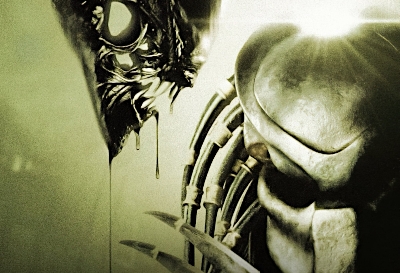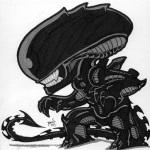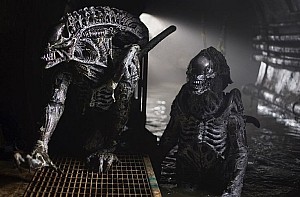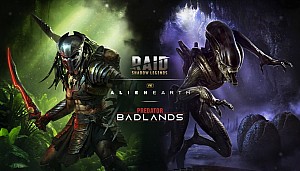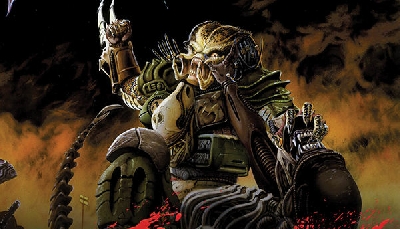Director of the original Alien vs. Predator (2004), Paul W.S. Anderson recently sat down with Josh Weiss for Forbes to reminisce his controversial crossover as the film surpassed its 20th anniversary. During the interview, Anderson talks about his work on AvP, his original plans for the sequel which became AvP: Requiem and also gives advice for whoever takes on the next film!

Josh Weiss: If Hollywood has taught us anything, it’s that no franchise is ever really dead. Do you have any advice for the eventual reboot of AvP?
Anderson: Just have fun with it. I know I did. It was a real treat. It was like working with the two biggest movie stars in the world, but they both smelled of rubber. It was definitely a career highlight for me. At the time, I said to all of the human actors in it, “Really enjoy this, because you’re becoming part of a pop culture phenomenon. There are going to be other Alien and Predator movies, which means AvP is always going to be revisited, repackaged, and repositioned.” Which is true. It’s wonderful being a part of that, and it keeps the work alive and in people’s minds — even when it’s 20 years old.
Alien vs. Predator 3 (aka the likely a reboot of the AvP franchise as a whole) is most certainly an inevitability at this point after the remarks made by 20th Century Studios head Steve Asbell last year and the direct nods to Alien being blatantly shown in the Predator: Badlands first teaser trailer.
Discussing the original AvP, Anderson addressed his early pitch for the film and how close it was to the final cut:
Josh Weiss: Was your original pitch very different from the final movie?
Anderson: It was pretty much the same. It was all rooted in Alien and Predator mythology. Although they were Fox’s franchises, I felt like I was pitching something fresh to them, having to persuade them to make the movie. They were like, “Mmm…do we really want to do this?” Because Alien: Resurrection and Predator 2 had been seen as disappointments. They were kind of seen as two moribund franchises. Also, there had been several other attempts to do an AvP movie. Roland Emmerich had been attached for a while — there had been other scripts, other directors — and none of them had gone anywhere. So I felt like they needed a fresh, radical take that would both honor the existing franchises and reinvigorate them.
I wanted to do it on Earth, because I felt like Alien: Resurrection was leading up to that point … We already know that the Predator functions on Earth and uses it as a hunting ground. So my story wove those facts together and brought in the Erich Von Daniken Chariots of the Gods themes, which felt very organic to both franchises. For Predator, it was easy because you knew Predators had been visiting the Earth for a long time. The Aliens you didn’t know about, but the first Alien movie had [concept art] of a pyramid with these wonderful Aztec meets Alien designs. Originally, the [Nostromo crew] was going to discover the alien ship, travel to this pyramid, and there, they would find the Alien eggs. That got cut for budgetary reasons and Ridley said, “Well, let’s just have the cave with the eggs underneath the spaceship.” But this idea of the pyramid always stuck with me. Obviously, pyramids are a very Earth-bound piece of architecture. And I was like like, “Well, what if that pyramid came from Earth?” That was really the starting point for the idea of the pyramid buried under the ice in Antarctica.
The reason for Antarctica was twofold. One, I think the Alien functions in a harsh environment. You can’t get much more harsh than outer space, but the fact is they use the Antarctic for testing space vehicles. The Mars rover was tested in Antarctica because it’s the harshest place on Earth. So if you’re going to have these creatures in a harsh environment, you can’t get any harsher than Antarctica. Two, the idea that the pyramid was buried under the ice and was a secret [felt like] something that could be covered up, just like the Predators were covered up in the Predator movies. This was an opportunity to stay true to the Alien movies because in the Alien movies, no one has publicly seen [a Xenmorph] before. But the The Weyland-Yutani Corporation is keeping secrets and who knows how far back those secrets go? So I thought Antarctica gave me the isolation to be able to tell that story on Earth and and stay true to the movies that had come before us.
Weiss: Did you have specific set pieces in mind for the sequel?
Anderson: There were pieces in my original screenplay that we didn’t shoot for budgetary reasons. They were basically going back in time to see the Predator on Earth a little bit more. Because in the final movie, you only see two time periods — the Aztec period and present-day. I wanted to have some midway marker points, the first of which would be in the snow, in the Battle of the Bulge [during WWII]. You were going to have some American GIs coming into contact with a Predator, which would have been very cool. The other one was basically going to be in the same time period as Prey, a sequence that had Native Americans and Predators. I don’t know if that was something that influenced the development of Prey, but that was definitely a two-page sequence in the original screenplay that we took out … They would have been flashbacks and would have explained that there was a growing knowledge in the American military-industrial complex that Predators existed. When Weyland [launches the expedition], he's going in with these guys who have guns. He knows that they're not just on a scientific expedition.
The interview covers a lot of interesting facts and lesser known details about the original film. Be sure to read the whole interview over on Forbes' website!
Continue discussing this topic as well as thousands more with other fans of Alien, Predator and Alien vs. Predator (AvP) in the AvP Online Forums here on AliensVersusPredator.net!
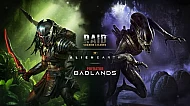
Alien & Predator invade Raid: Shadow Legends!
Raid: Shadow Legends collaborates with Alien: Earth and Predator: Badlands to bring the Xenomorph and Yautja to the game for a limited time!
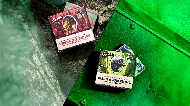
Alien Awakening / Predator Purge Limited Edition Dr. Squatch Soaps – Order Now!
Dr. Squatch have partnered with 20th Century Studios and Disney to bring a limited edition Alien and Predator soap line to the popular Squatch lineup!...

Now is the time for Disney to release the Alien vs. Predator: Annihilation anime series!
An Alien vs. Predator anime series was originally developed for Netflix many years ago, but following the acquisition of 20th Century Fox by Disney, t...

